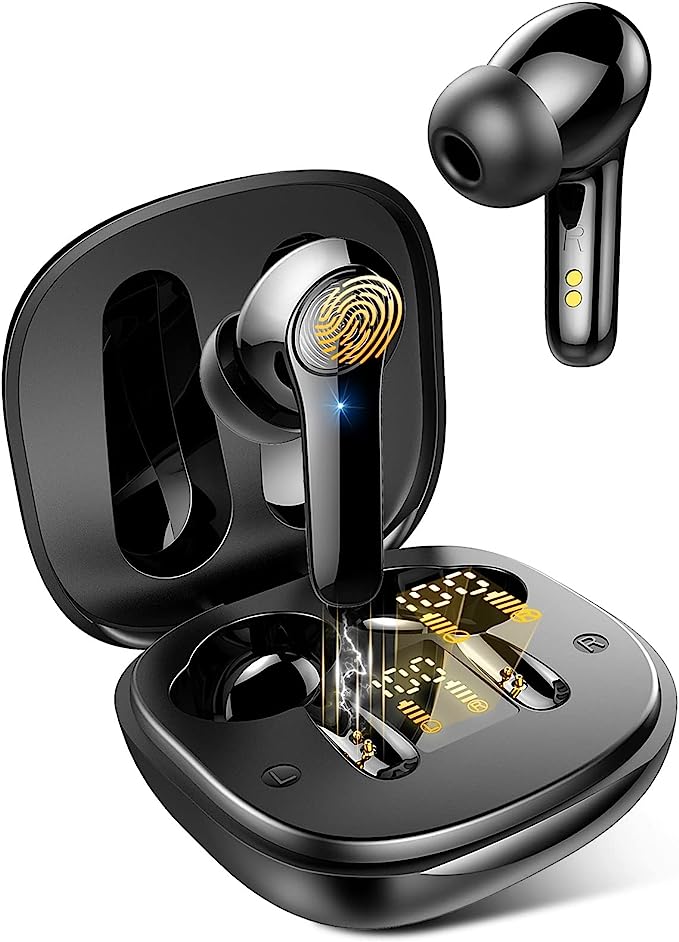Ikarao Shell S2: Portable Karaoke Machine with Concert-Quality Sound
Update on Sept. 23, 2025, 5:47 a.m.
There’s a moment in every great karaoke night. The backing track swells, the crowd quiets, and for a few soaring seconds, a friend’s voice fills the room with surprising power and clarity. It feels like magic. We are so accustomed to the seamlessness of modern audio that we rarely stop to consider the chain of invisible miracles that makes such a moment possible. How does a small, portable box capture a voice, polish it to a shine, blend it with a symphony, and project it back to us, all without collapsing into a squealing mess of feedback?
This isn’t magic. It’s an exquisite alchemy of physics, computer science, and human perception, refined over decades. To understand it, we must follow the journey of a single, sung note. It’s a journey that begins as a simple vibration in the air and ends as an emotion in our minds, and along the way, it is captured, translated, transformed, and reborn. Let’s trace that path, using a modern all-in-one system as our guide, to reveal the hidden genius inside the box.

Act I: The Capture - From Breath to Binary
Everything begins with a vibration. When you sing, your vocal cords create pressure waves in the air—the physical reality of sound. The first challenge is to catch this fleeting energy. This is the job of the microphone, a device that acts as the system’s ear.
At its heart, a microphone is a transducer, a category of devices that work as energy converters. It performs the astonishing task of translating the physical push-and-pull of air pressure into a fluctuating electrical voltage. In many modern microphones, this is achieved thanks to an invention from the 1960s by Bell Labs engineers James West and Gerhard Sessler: the electret microphone. Their creation, now ubiquitous, uses a permanently charged material that moves in response to sound waves, generating a tiny, corresponding electrical signal. The microphone and the speaker are transducer twins, mirror images of each other in a conversation between energy forms. One listens, the other speaks.
But simply listening isn’t enough. A microphone must listen smartly. Anyone who has ever stood too close to a PA system knows the ear-splitting shriek of acoustic feedback. This happens when a microphone picks up the sound from its own speaker, creating a vicious, self-amplifying loop. The solution lies not in brute force, but in elegant physics: directionality.
Microphones have “pickup patterns,” which are essentially maps of their sensitivity in different directions. The most basic might be omnidirectional, hearing equally from all around. But for live vocals, you need a spotlight, not a floodlight. This is where patterns like the super-cardioid come in. Imagine a tight, focused beam of hearing pointed directly at the singer, while sounds from the sides and, crucially, the rear (where the speaker might be) are largely ignored. In a compact, portable karaoke system like the Ikarao Shell S2, where the singer, microphones, and speakers are in close proximity, this highly directional capture isn’t a luxury; it’s the fundamental principle that makes the whole endeavor possible.
Once captured, this fragile analog signal, a continuous wave of electricity, takes its next great leap. It enters an Analog-to-Digital Converter (ADC), which samples the wave thousands of times per second, translating its shape into a stream of 1s and 0s. Your voice, once a physical wave, has now become pure information. This is where the alchemist gets to work.

Act II: The Alchemist - Forging Sound in Silicon
The stream of data flows into the machine’s brain: the Digital Signal Processor (DSP). If the microphone is the ear, the DSP is the auditory cortex—a specialized, lightning-fast computer dedicated to a single purpose: manipulating sound in real time. This tiny chip is responsible for feats that would have required a room full of expensive studio equipment just a few decades ago.
First, it acts as a ghostbuster, hunting for echoes. In any room, sound bounces off surfaces, creating reverb and echo that can make audio muddy. The DSP combats this with a technique called adaptive filtering. It sends out an imperceptible test signal or analyzes the incoming audio to create a digital “fingerprint” of the room’s echo path—how long it takes for reflections to return and how they sound. Once it learns this pattern, it can intelligently subtract the echo from the microphone signal in real time. It’s the same core technology that prevents you from hearing your own distracting echo during a video conference call.
Next, the DSP becomes a purifier. It listens for the signature of unwanted background noise—the steady hum of an air conditioner, the whir of a fan. The mathematical tool for this is often a version of the Fast Fourier Transform (FFT), a brilliant algorithm that acts like a sonic prism. It takes a complex sound wave and breaks it down into its constituent frequencies, revealing the sound’s spectrum. The DSP can see the persistent, low-frequency hum as a distinct spike in the spectrum and, like a sonic surgeon, precisely cut it out without affecting the complex, shifting frequencies of the human voice.
Finally, the DSP becomes a sculptor. Using that same spectral information from the FFT, it can perform Equalization (EQ), boosting or cutting specific frequency bands to shape the tone. It can make a voice sound warmer by boosting lower-mid frequencies or add clarity by nudging the highs. The “sound effects” on a karaoke machine are simply pre-programmed recipes of EQ and other DSP tricks, like mathematically generating artificial reverb to make you sound like you’re singing in a cathedral instead of a living room.

Act III: The Proclamation - From Code to Concert
The DSP has now cleansed, sculpted, and perfected the digital data representing the voice. It’s time to bring it back into the physical world. The data is sent through a Digital-to-Analog Converter (DAC) and then to the speakers—our other transducer twin.
Here, the process reverses. The electrical signal flows into a coil of wire (the voice coil) attached to a cone (the diaphragm), which is placed in a magnetic field. The fluctuating current creates a fluctuating magnetic force, pushing and pulling the cone back and forth at incredible speed. These movements create pressure waves in the air. Code has become a concert.
But the final part of the equation isn’t in the box at all; it’s in our heads. This is the realm of psychoacoustics, the study of how we perceive sound. Our hearing is not a perfect, linear microphone. For instance, the Fletcher-Munson curves, discovered in the 1930s, show that our ears are far less sensitive to low and high frequencies at low volumes. This is why music can sound thin and tinny when you turn it down. A “Bass Boost” button on a modern speaker isn’t just a crude gimmick; it’s a psychoacoustic tool. It compensates for our hearing’s natural deficiency at lower volumes, boosting the bass frequencies so the music feels just as full and rich as it does when it’s loud. It’s engineering that works with the quirks of our biology.

The Genius in Your Fun
From a singer’s breath vibrating the air to a DSP chip performing trillions of calculations per second, the journey is extraordinary. We’ve seen how the focused listening of a super-cardioid microphone tames feedback, how a digital processor acts as an artist and a scientist to refine sound, and how the entire system is tuned not just to the laws of physics, but to the peculiarities of human hearing.
The evolution from the cumbersome LaserDisc karaoke machines of the 1980s to a compact, intelligent, all-in-one device is a quiet monument to the relentless progress of science and engineering. The true genius of a product like the Ikarao Shell S2 isn’t in any single feature, but in the seamless, invisible integration of dozens of scientific principles. The technology works so well that it disappears, leaving behind only the experience, the connection, and the joy. The magic, it turns out, is real—and it was engineered.






































